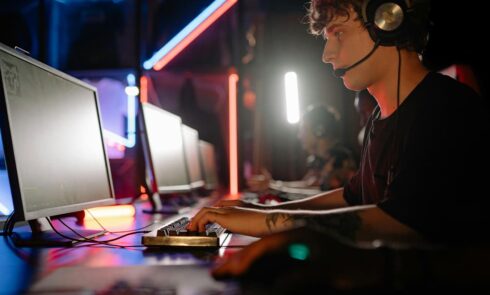Esports has rapidly evolved into a global phenomenon, captivating audiences and participants across various genres. Among these, racing games have emerged as a significant player in the esports arena. The fusion of speed, strategy, and competitive spirit has made racing games an attractive genre for both players and spectators. This article explores the growth of esports in racing games, highlighting key developments, prominent events, and future trends, with a nod to how technology, such as Microsoft Jewel, plays a role in this evolution.
1. The Rise of Competitive Racing Games
The competitive aspect of racing games has been gaining momentum, driven by several factors.
- Technological Advancements: The evolution of gaming technology has greatly enhanced the realism and complexity of racing games. High-definition graphics, realistic physics engines, and advanced control systems have created a more immersive and engaging experience, drawing players and viewers alike.
- Popular Titles: Games like Forza Motorsport, Gran Turismo, and iRacing have become staples in the competitive racing scene. These titles offer robust online multiplayer modes and organized tournaments, contributing to the genre’s growth in esports.
2. Major Racing Game Tournaments and Leagues
The growth of esports in racing games is marked by the establishment of major tournaments and professional leagues.
- Virtual Racing Championships: Tournaments such as the Formula 1 Esports Series and World’s Fastest Gamer have put competitive racing on the global stage. These events feature top players from around the world, competing for significant prizes and recognition.
- Professional Racing Leagues: Professional leagues like the eNASCAR iRacing Series and Gran Turismo Sport Nations Cup offer structured competitions where players can showcase their skills and engage in high-stakes racing.
- Community and Grassroots Events: Local and community-based events also play a crucial role in the growth of racing esports. These grassroots competitions provide opportunities for emerging talents to gain experience and visibility.
3. The Role of Technology in Enhancing Esports
Technological innovations have been pivotal in the expansion of esports in racing games.
- Advanced Simulators: Cutting-edge racing simulators and equipment, such as force-feedback steering wheels and high-resolution displays, have elevated the gaming experience. Players can now train and compete with equipment that closely mimics real-world racing conditions.
- Streaming Platforms: Platforms like Twitch and YouTube have facilitated the growth of esports by allowing players to broadcast their performances and interact with fans. Live streaming has become an essential component of the esports ecosystem, making events more accessible and engaging.
- Integration with Technology: Tools like Microsoft Jewel contribute to the development of esports by providing advanced analytics and performance tracking. These tools help players and teams analyze their gameplay, refine strategies, and enhance their overall performance.
4. The Impact of Esports on the Racing Game Community
The rise of esports in racing games has had a significant impact on the gaming community.
- Increased Engagement: Esports has fostered greater engagement among racing game enthusiasts. Fans can follow their favorite players, participate in discussions, and enjoy high-quality content related to their interests.
- Career Opportunities: The growth of esports has created new career opportunities within the racing game industry. Players can now pursue professional careers, earn sponsorships, and gain recognition on an international scale.
- Innovation and Collaboration: The competitive scene has driven innovation and collaboration between developers, players, and sponsors. This synergy leads to the creation of new features, improvements, and opportunities within the racing game genre.
5. Future Trends and Developments
The future of esports in racing games promises further growth and innovation.
- Virtual Reality and Augmented Reality: Emerging technologies such as VR and AR are set to revolutionize the racing esports experience. These technologies offer more immersive environments and gameplay, potentially enhancing both training and competition.
- Enhanced Analytics: Advanced analytics tools, like those offered by Microsoft Jewel, will continue to play a crucial role in refining player strategies and improving overall performance. Data-driven insights will help teams and individuals gain a competitive edge.
- Global Expansion: As esports continues to grow, racing games are likely to see increased international participation and viewership. Global expansion will bring new opportunities for players and fans alike, contributing to the genre’s continued success.
The growth of esports in racing games reflects the genre’s increasing prominence and the dynamic nature of competitive gaming. From major tournaments and professional leagues to technological advancements and community engagement, racing games have firmly established themselves in the esports landscape. With the continued integration of cutting-edge technology, such as Microsoft Jewel, and the ongoing development of new trends, the future of racing game esports looks promising. As players and fans gear up for the next exciting chapter, the fusion of speed, strategy, and competition will undoubtedly continue to captivate audiences worldwide.

